Painting a Cedar Chest
Have you ever wanted to give your old furniture a makeover? With just a few simple steps, you can give an outdated cedar chest a new look and make it fit in with the rest of your home decor.
Whether you want to add some color or simply give it a new coat of paint, painting a cedar chest is an easy and inexpensive way to get creative with your furniture. Plus here are more gray painted furniture ideas to gather inspiration from!
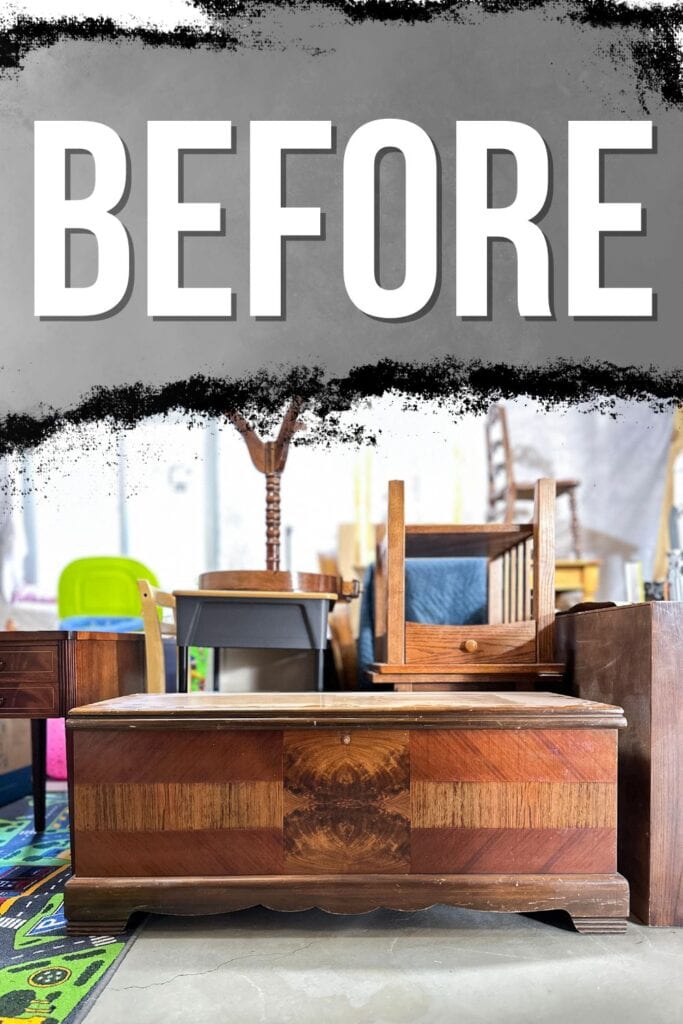
We bought this cedar chest from a neighbor for $75. I love updating cedar chests, and this one is no exception! I think it’s my favorite cedar chest makeover yet!!
Supplies Used for Painting a Cedar Chest
As an Amazon Associate, I earn from qualifying purchases. I also may earn from other qualifying purchases with other companies or get free product to review and use. All opinions are my own.
- Electric Screwdriver
- Krud Kutter
- Wood Filler
- Festool Sander
- 100 Grit, 150 Grit, and 220 Grit Sandpaper (Use code RAY10 to get 10% off your order)
- Fine Grit Foam Sponge (Use code RAY10 to get 10% off your order)
- Shop Vac
- Tack Cloth
- Painters Tape
- BIN Shellac Based Primer
- Roller
- General Finishes Milk Paint in Seagull Grey
- Redesign Decor Moulds – In the Garden
- Redesign Decor Moulds – Leafy Blossoms
- Casting Resin
- Instant Super Glue
- Zibra Round Paint Brush
- Waterbased Polyurethane
- Wagner FLEXiO 3500
Grab our list of 10 must have painting furniture supplies too! Now let’s get into the details so you can paint a cedar chest too!
Alright, first things first, we removed the lock from the cedar chest. (Did you know that these locks aren’t safe if you have kids around?)
Preparing Cedar Chest for Paint
Then my husband cleaned it with Krud Kutter to remove any grease, oils, or grime from the surface. Learn exactly how to clean furniture before painting here.
Then I filled in a few small dings on the top of the cedar chest with some wood filler and let it dry. Here’s my list of the best wood fillers for furniture.
The top had quite a few scratches in it, so my husband sanded it down to bare wood with our Festool sander once the wood filler was dry. Check out my Festool RTS 400 REQ sander review here.
Even though most of the scratches were light, I knew that if we didn’t do anything about them, we would still see them in the end.
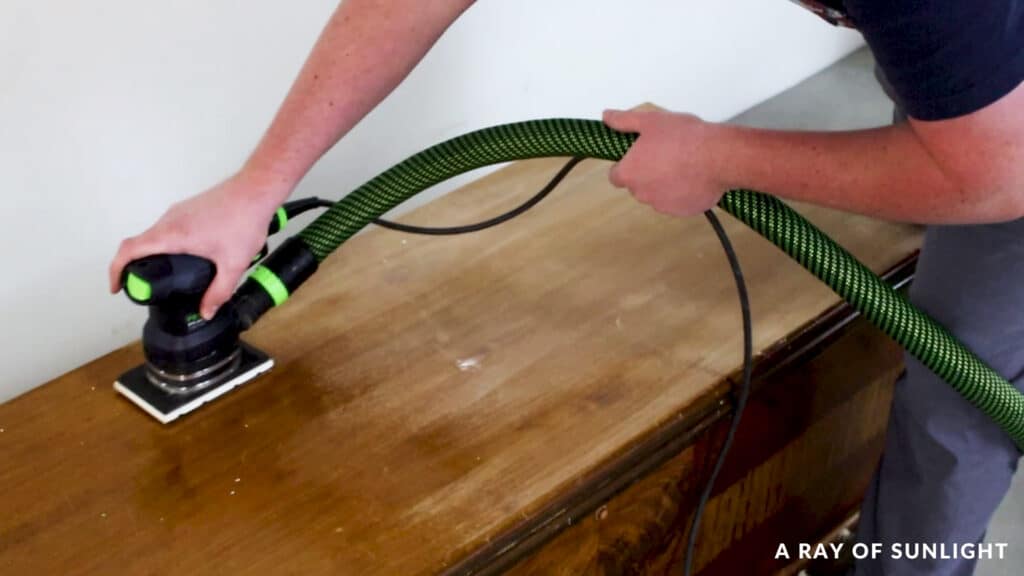
He used 100 grit sandpaper to get most of the finish off and then used 150 grit and ended with 220 grit sandpaper to end with a smooth surface.
Then he sanded the rest of the cedar chest with 220 grit sandpaper and a fine grit foam sponge for the curved edges. Learn about the best sandpaper for furniture painting here.
This step is called scuff sanding and it helps the paint adhere to the finished wood.
See how it looks all foggy now without any sheen? That’s what we want it to look like. Learn more about the importance of sanding before painting furniture.
He cleaned up all of the dust, which there was honestly very little of because this sander was hooked to the shop vac, and the sander has some suction of its own to help keep the dust down.
Learn about the best sanders for furniture here (yep, this one is on the list!). Check out my SurfPrep Vacuum POV-8 review to learn more.
Priming Cedar Chest Before Painting
We moved it into our paint booth and he taped the edges off for me so I didn’t get any paint on the inside.
We wanted to use a lighter color for this makeover, so I rolled on some white tinted BIN shellac based primer.
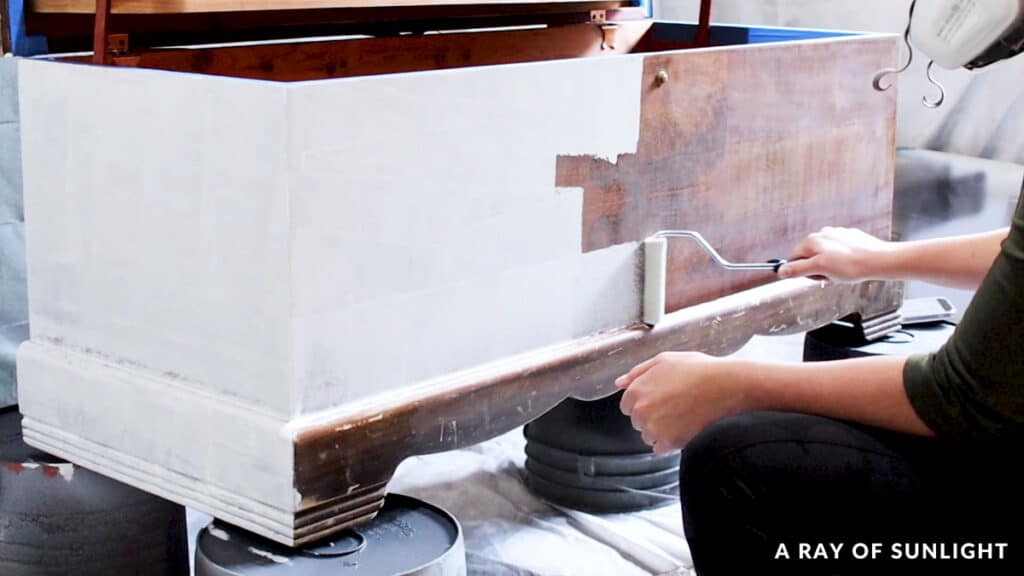
It’s the best primer for painting furniture especially when painting furniture a lighter color. It stops stains from coming through the paint, and it helps the paint stick really well.
Check out this post on how to paint laminate furniture to see how BIN shellac primer compares to how well other primers stick.
Or check out this post on the best primers for painting furniture (and how to choose the right one) to see how it compares to others.
I used to hate rolling this primer on, because I don’t like roller texture, but when I used this specific roller, I don’t get as much texture. Check out our list of the best rollers for painting furniture too.
On the top, where Taylor sanded down to the bare wood, I made sure to push the primer into the wood grain and fill in it so I didn’t have a bunch of dark spots all over the top.
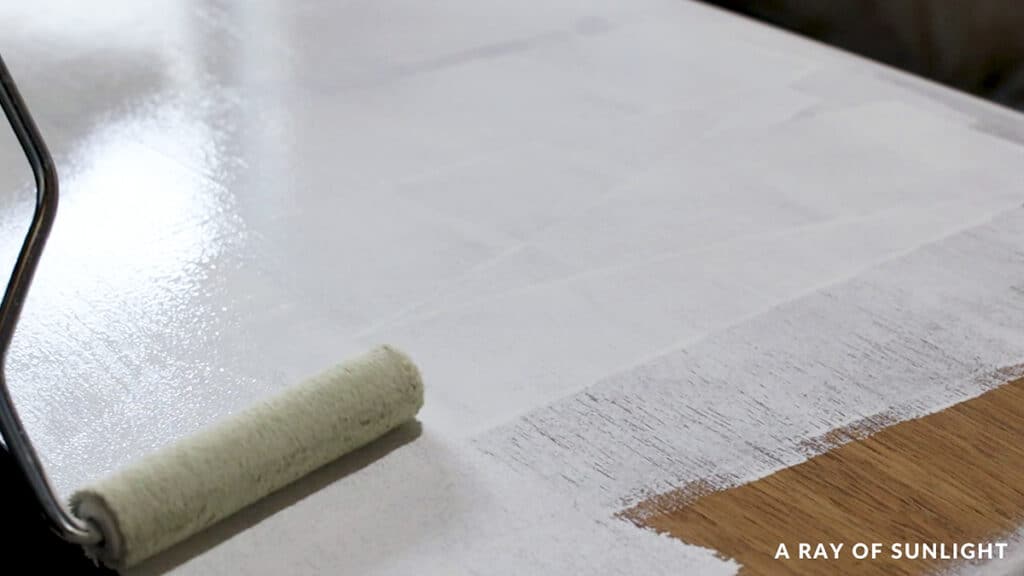
I could have also used this technique to hide wood grain when painting if the grain was super deep. I rolled on 2 coats of primer and let it dry overnight.
Sanding Primed Cedar Chest
Then Taylor sanded the primer by hand with 220 grit sandpaper and a fine grit sanding sponge to smooth out any texture that was left by the roller.
We didn’t want to use the sander for this part because we wanted most of the primer to stay. The sanders are so powerful that even on their lowest settings, they sand too much primer off.
Then he cleaned up the dust with the shop vacuum and a tack cloth… this time there was a lot more dust to clean up.
Decorating Cedar Chest with Redesign Decor Moulds
While he was working on that, I was working on the fun part!
I used these redesign décor moulds (In the Garden and Leafy Blossoms) and casting resin to create flowers and leaves to decorate the cedar chest with.
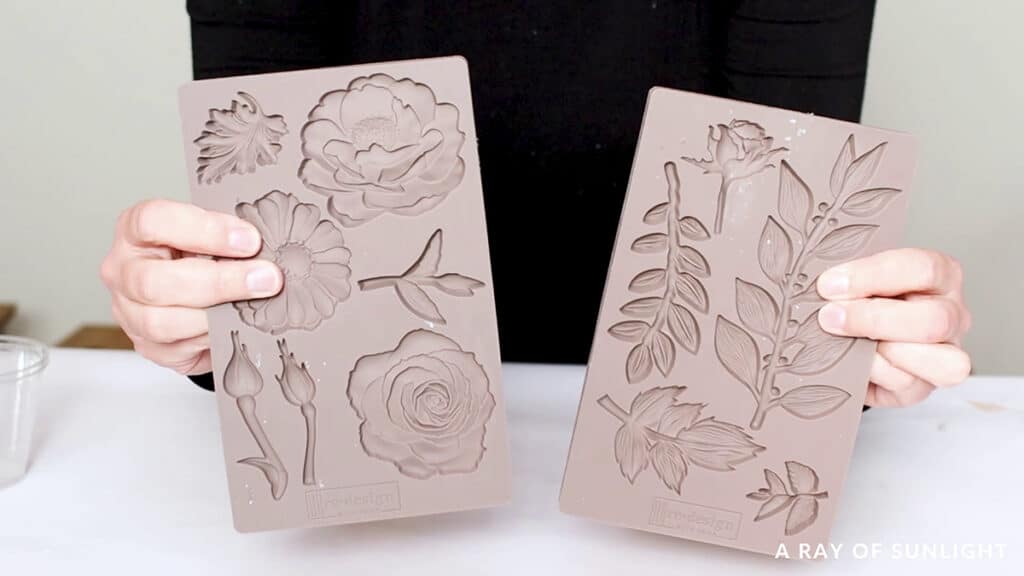
I was a little nervous about this part since it was my first time, but it was actually REALLY easy! Just mix 2 equal parts of resin together and pour it into the mould slowly.
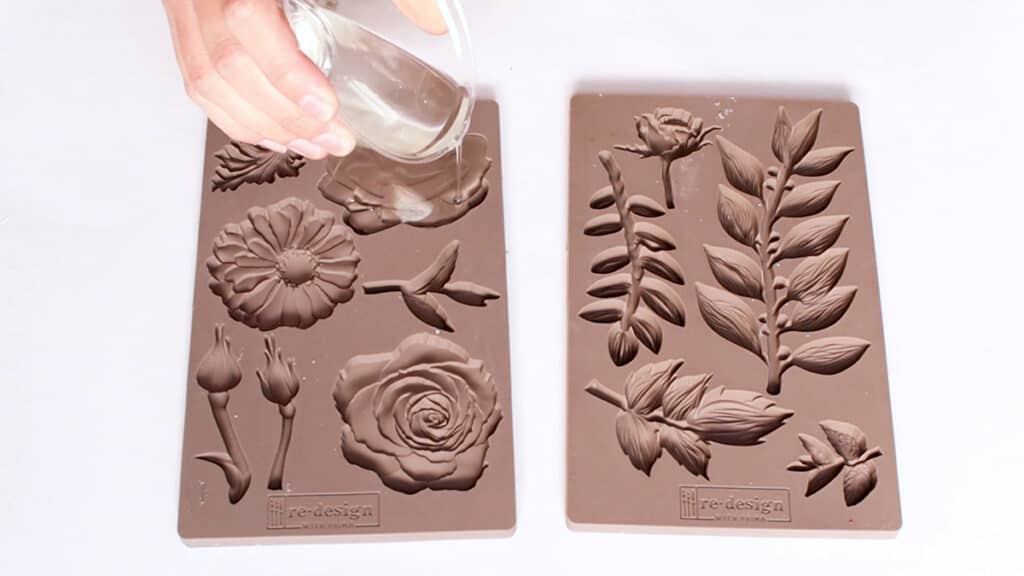
Within 15 minutes a batch of flowers and stems were done and I popped them out to make more. I think I made like 5 or 6 batches and went through a little more than 1 package of casting resin.
Then, I laid them out how I thought I might want them to go. The ones that were fresh could bend around the corner of the cedar chest!
Gluing On Redesign Decor Moulds
I used my favorite instant super glue to glue everything in place. Put the glue on the piece and spray the activator on the cedar chest, quickly stick it in place and within seconds the glue was dry.
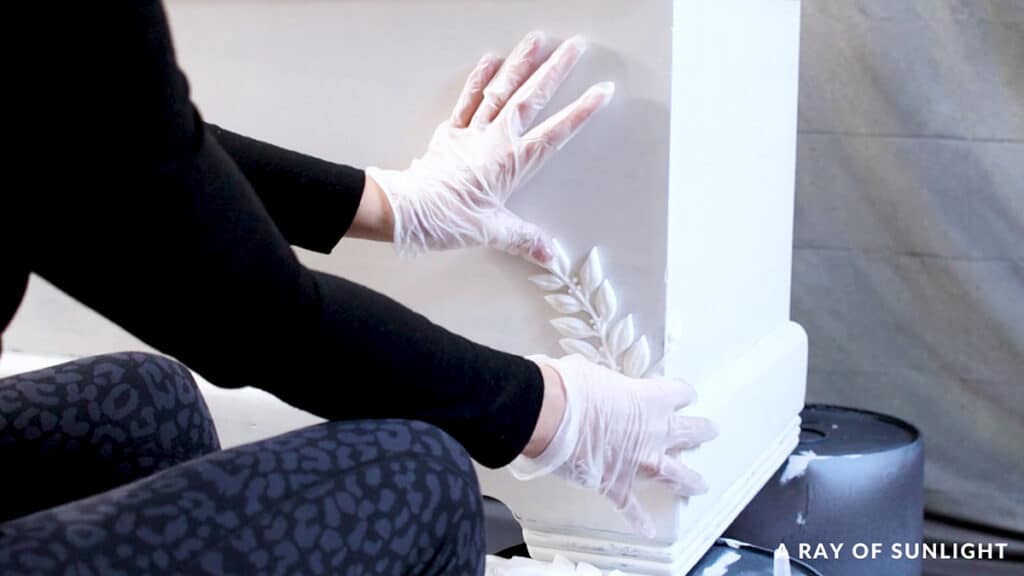
Honestly, I studied quite a few other makeovers from other furniture painters to learn how to place these to look natural.
Check out this dresser makeover with these flower moulds from Ship’s Furniture Flips on Instagram. Pretty Distressed has a super cute dresser with decor moulds as well.
That was the part that I struggled with the most. But, I basically started with the largest pieces, making the leaves touch the flowers in the grooves.
And then have more leaves touching the flower on the other side and going in a different direction.
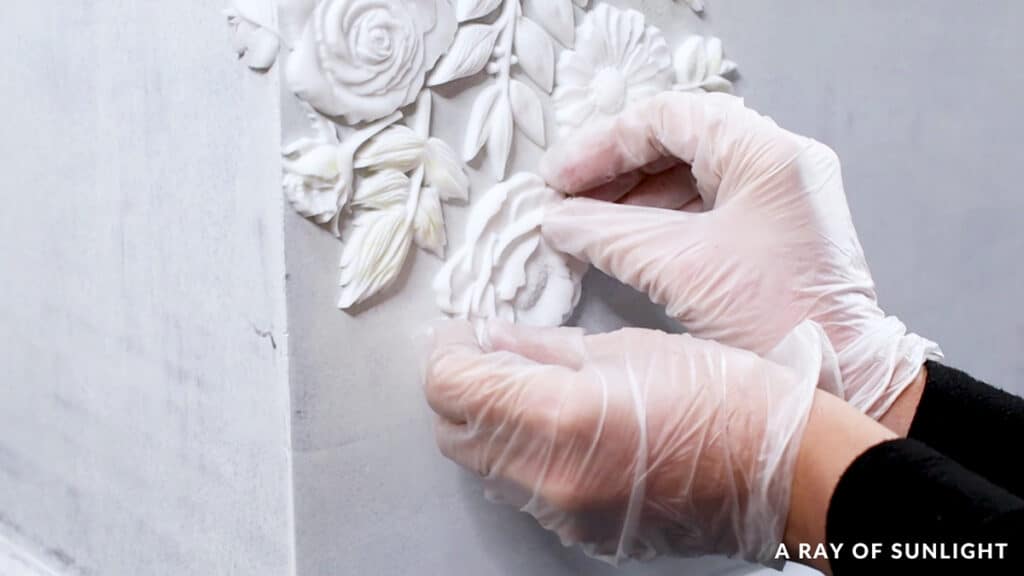
It feels weird when working with each individual piece to put it all together, but once it was all together and I stepped back, it all came together and looked so good!
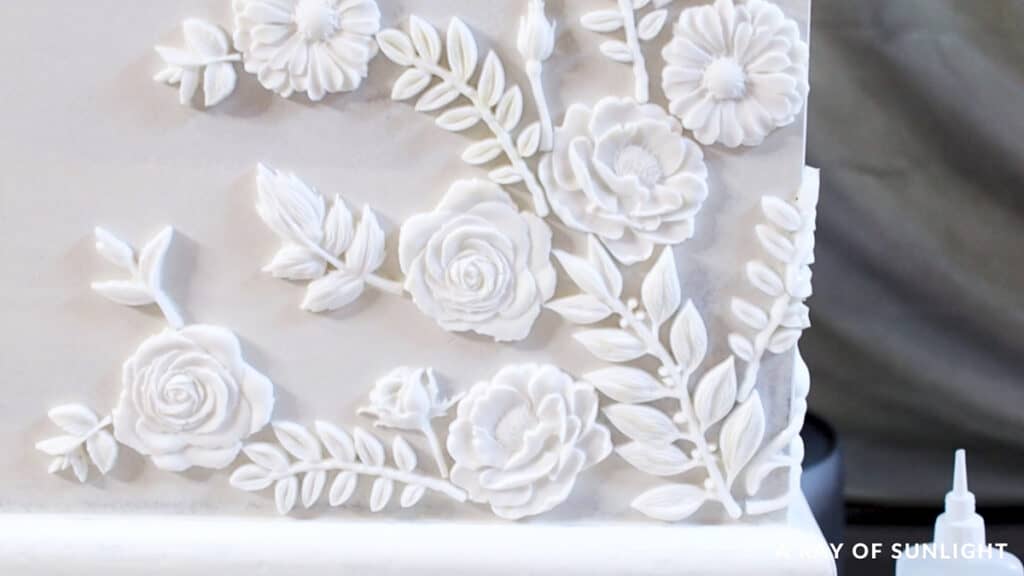
Another super cute idea would be stenciling furniture or applying furniture transfers instead of these decor molds.
You can also use wallpaper for unique designs on furniture. Check out these wallpaper dresser ideas.
Painting Cedar Chest with General Finishes Milk Paint
After they were all glued in place, I brushed and rolled on the paint. Check out my list of the best paint brushes for painting furniture here.
This time I used this gorgeous light grey called Seagull Grey from General Finishes milk paint line.
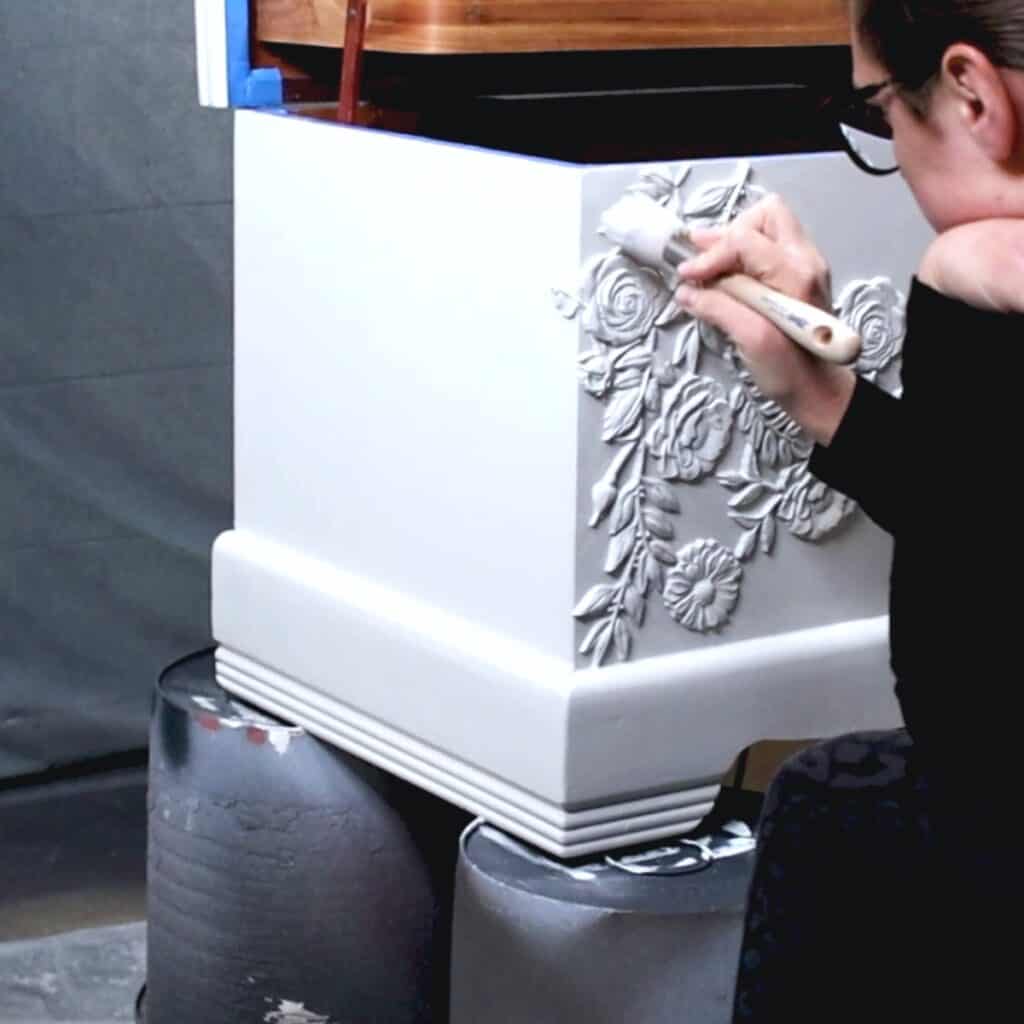
I love General Finishes milk paint. It levels out really well so you aren’t left with brush marks or roller marks everywhere.
It dries hard and honestly probably doesn’t REALLY need a topcoat because it’s pretty durable. Here’s my detailed General Finishes milk paint review to learn more.
Check out this makeover, painting with General Finishes milk paint for more information on it. Here’s everything you need to know about painting furniture with acrylic paint.
I let it dry for an hour or two between coats of paint. When the second coat was dry, I saw in better light that there was some glue that made some bad texture in the flowers.
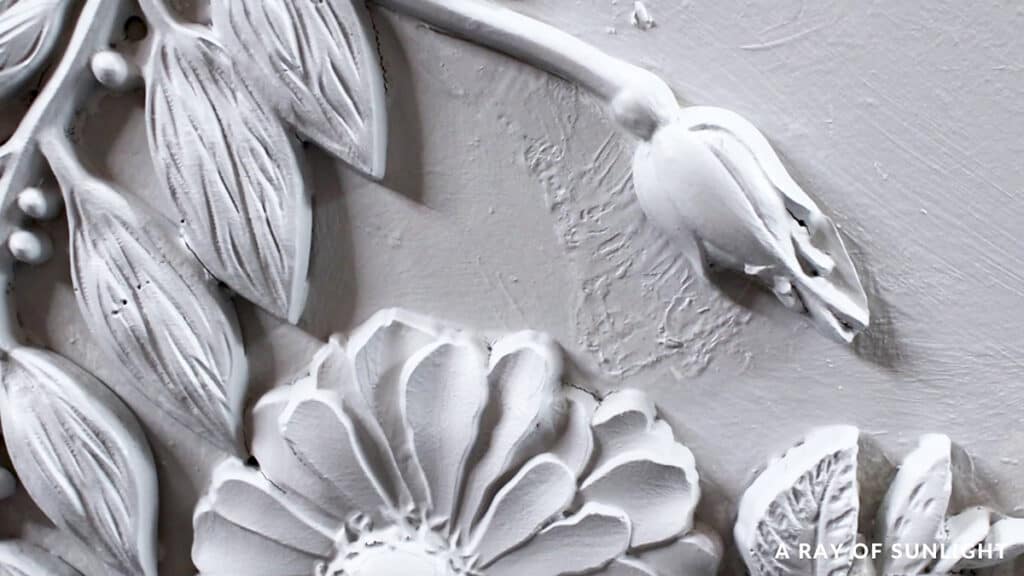
I could also still see the white primer underneath in some spots between the flowers. This paint was at full strength too, I didn’t add any water this time.
So, I sanded off the texture and painted 2 more coats to get full coverage. Not sure about using General Finishes milk paint? Here are the best paints for wood furniture.
And if you aren’t a fan of sanding, here are the best paints for furniture without sanding.
Topcoating Painted Cedar Chest
We finished up by spraying some waterbased polyurethane on to protect the paint. Learn how to spray polyurethane here.
I wouldn’t be surprised if whoever buys this will sit on it, and I want to make sure the top is as durable as possible.
If I didn’t have a paint sprayer to spray the polyurethane, I would have used Minwax’s polycrylic in a spray can. Learn more about how to apply polycrylic to painted furniture here.
After 24 hours, the polyurethane was dry enough to lightly use the cedar chest.
If you don’t want to topcoat your paint, here are the best all-in-one paints for furniture that mostly don’t need a topcoat.
Watch the video of how we painted the cedar chest:
And here’s what it looks like now!
If you want more amazing furniture makeover ideas, check out this post for a collection of fun and easy-to-follow makeovers that’ll bring personality to your home.
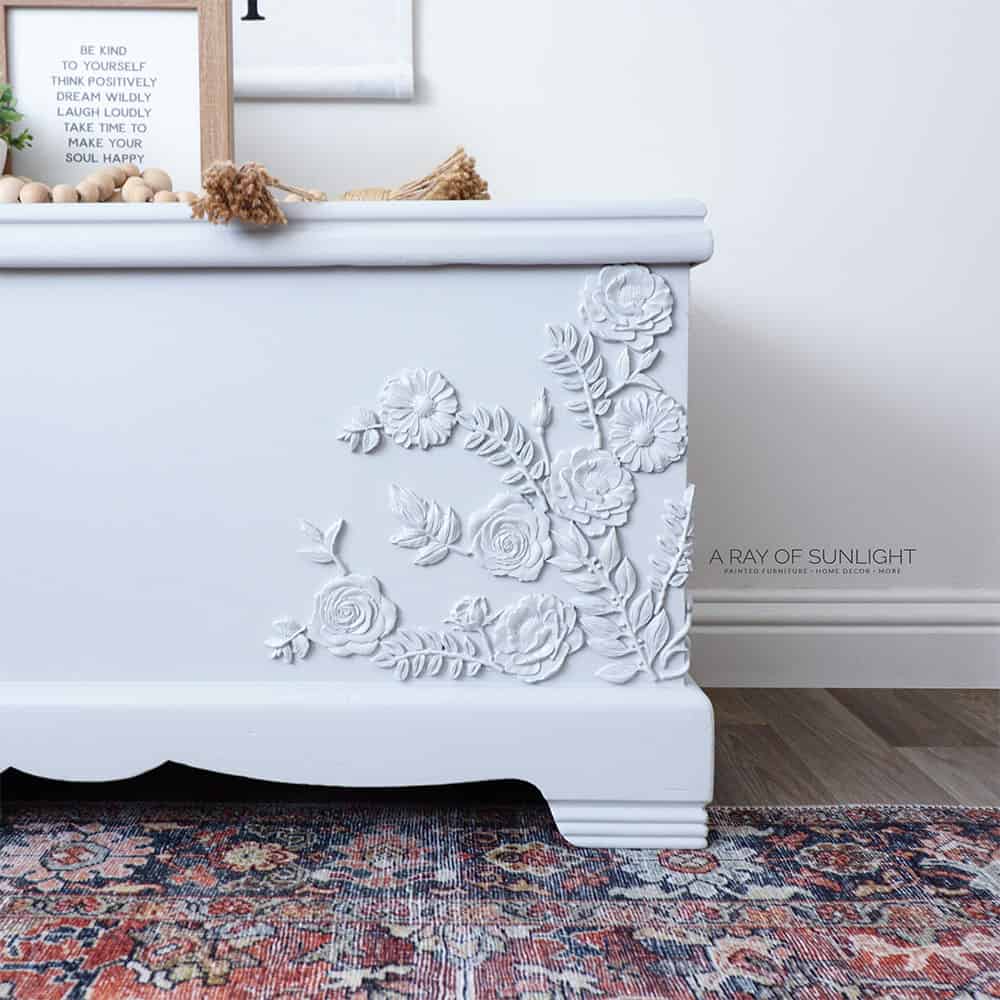
More Before And After Makeovers
Click any of these “before” photos below to view the “after” of that makeover.
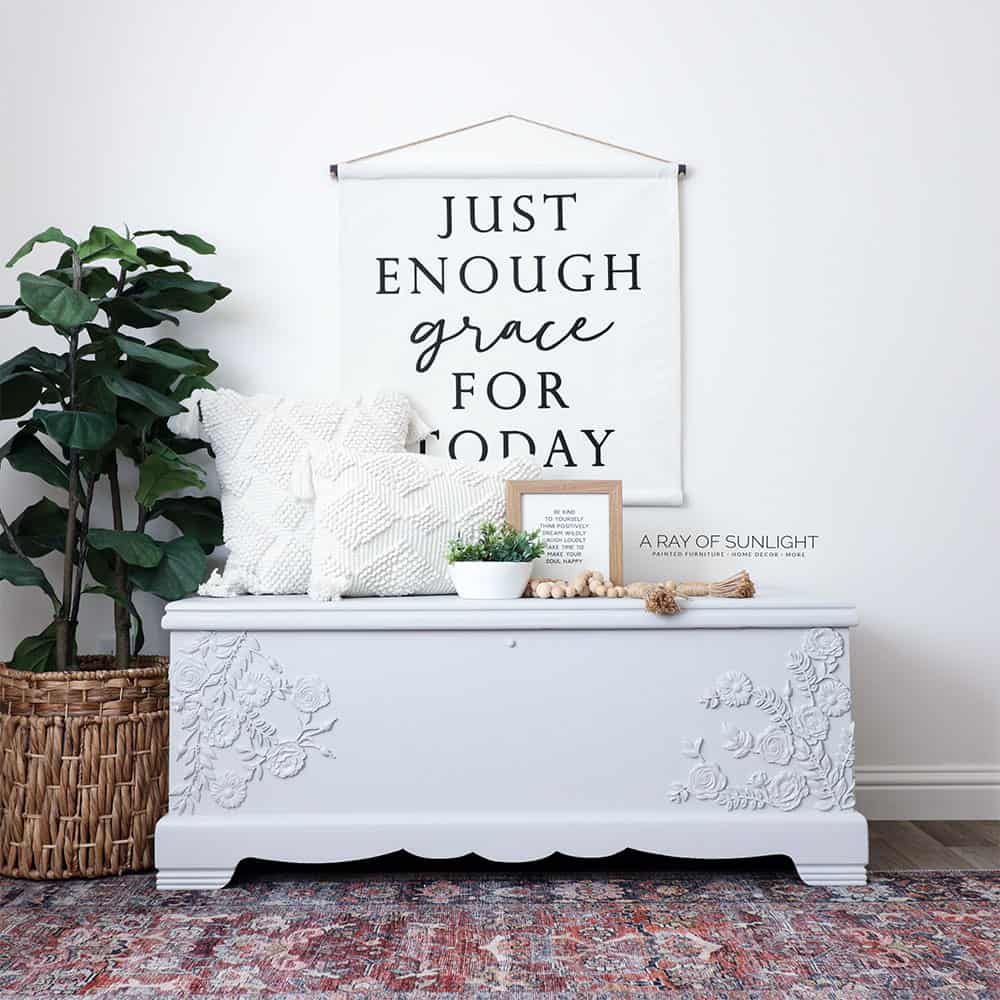
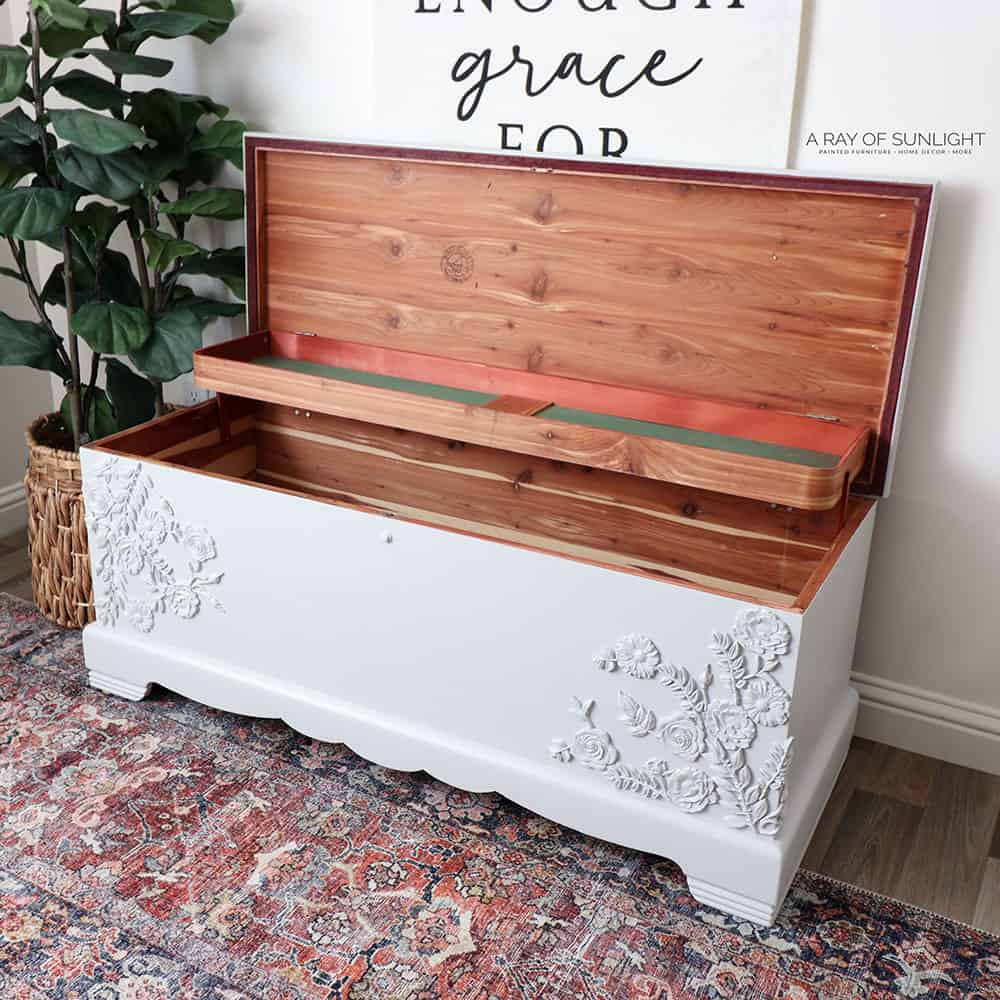
Okay, I absolutely love this makeover. I was nervous about the placement of the flowers, but I think it looks so good!!
I love the light grey to lighten it up and it just looks so cute now! And that paint… it looks SO good brushed and rolled! I honestly don’t notice any brush or roller texture, and that’s saying something!
What do you think?? Let me know in the comments!
More Cedar Chest Makeovers
- DIY Cedar Chest Makeover
- Painted Cedar Chest Makeover
- Adding Legs to a Cedar Chest
- Painting Furniture Black
- Painted Cedar Chest Ideas
Follow us on YouTube to get more tips for painting furniture.
Or share your project with us on our Facebook Group and be part of our community. See you there!
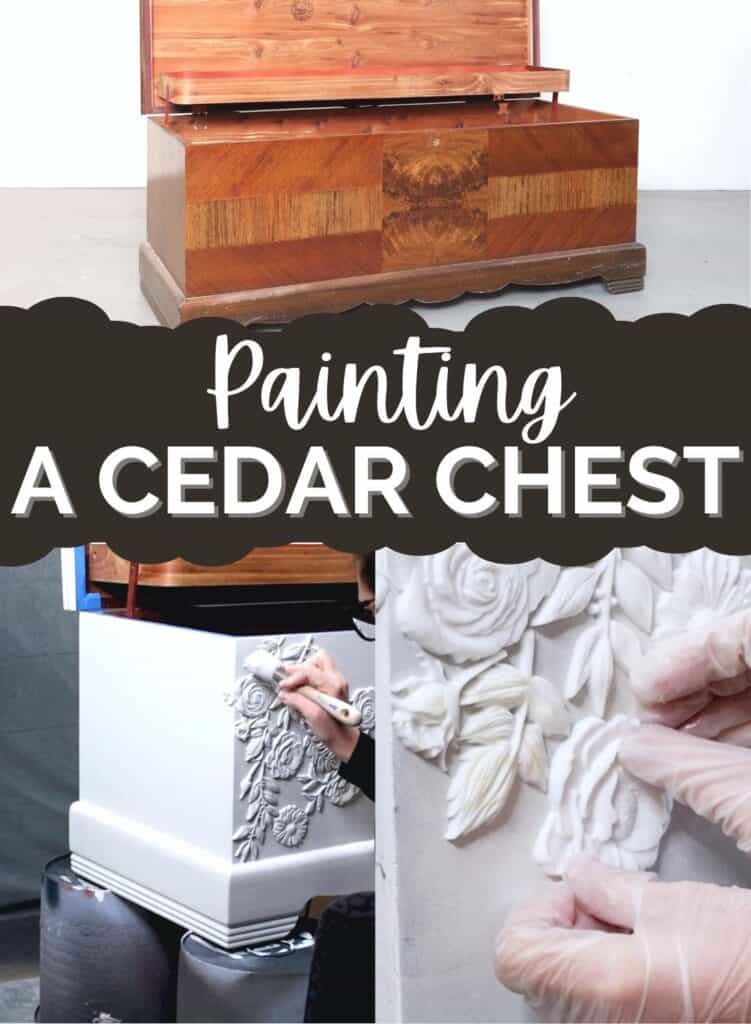

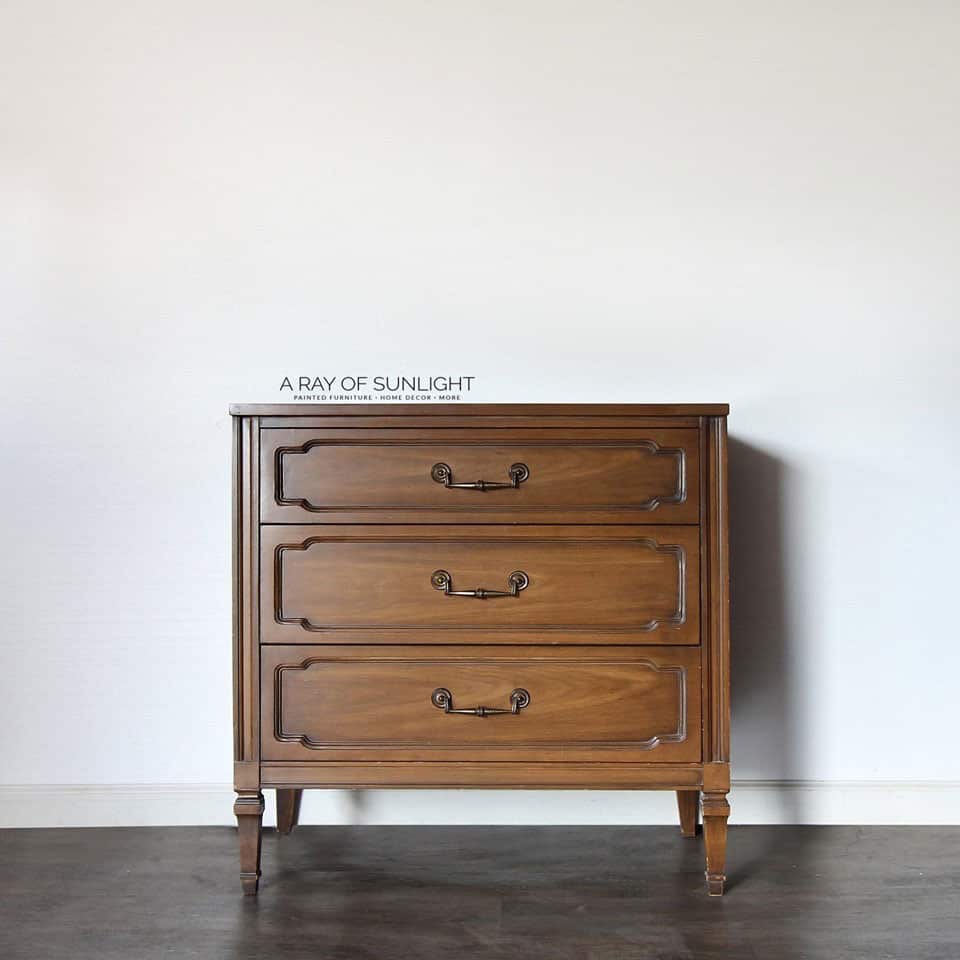
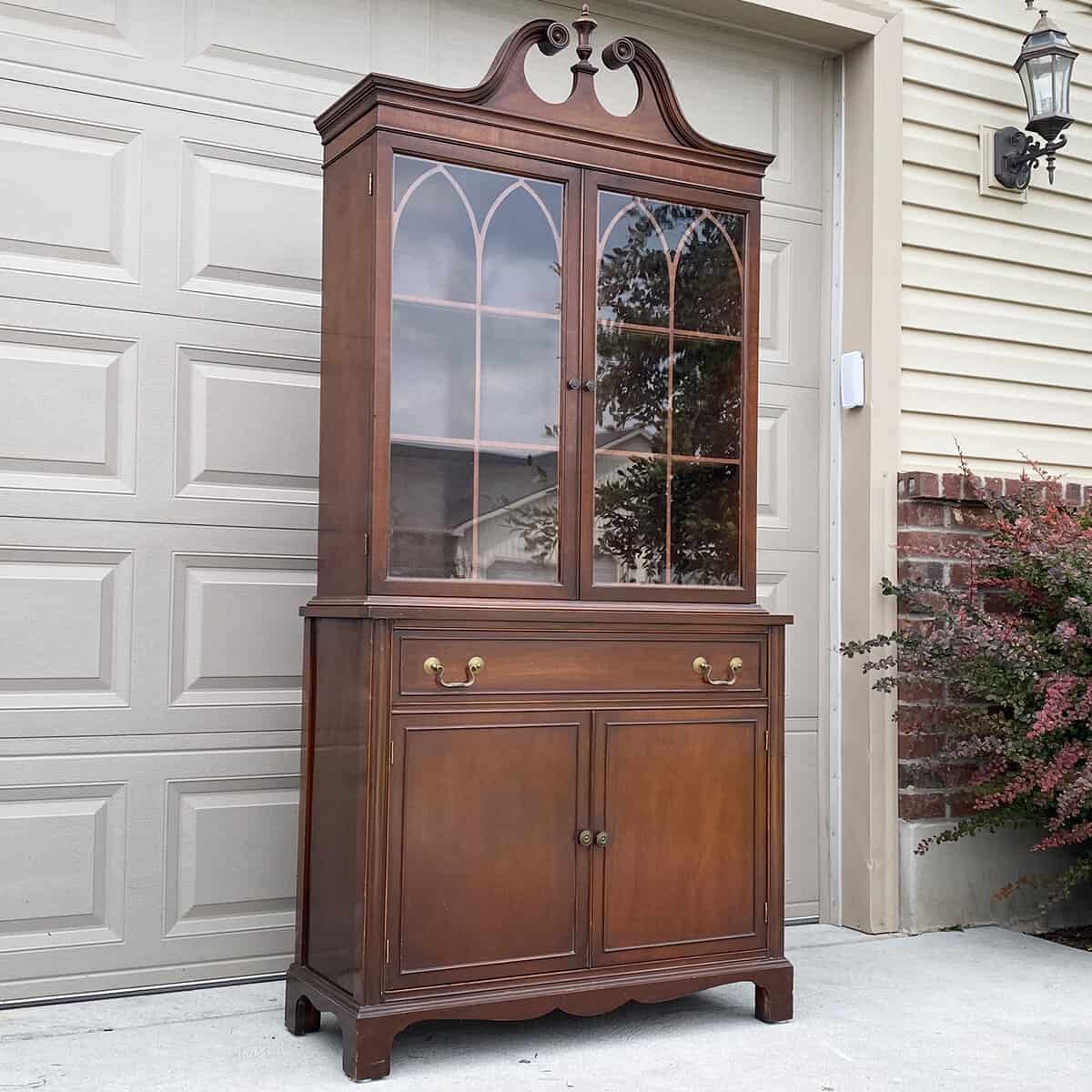
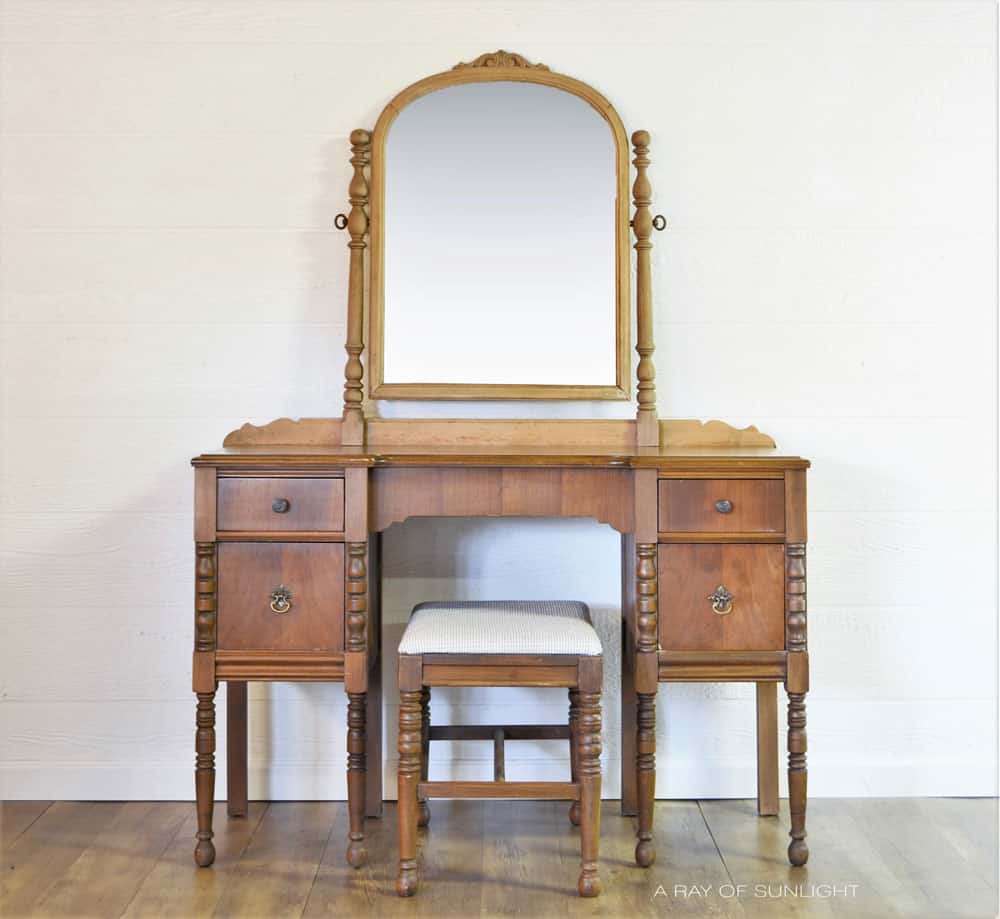
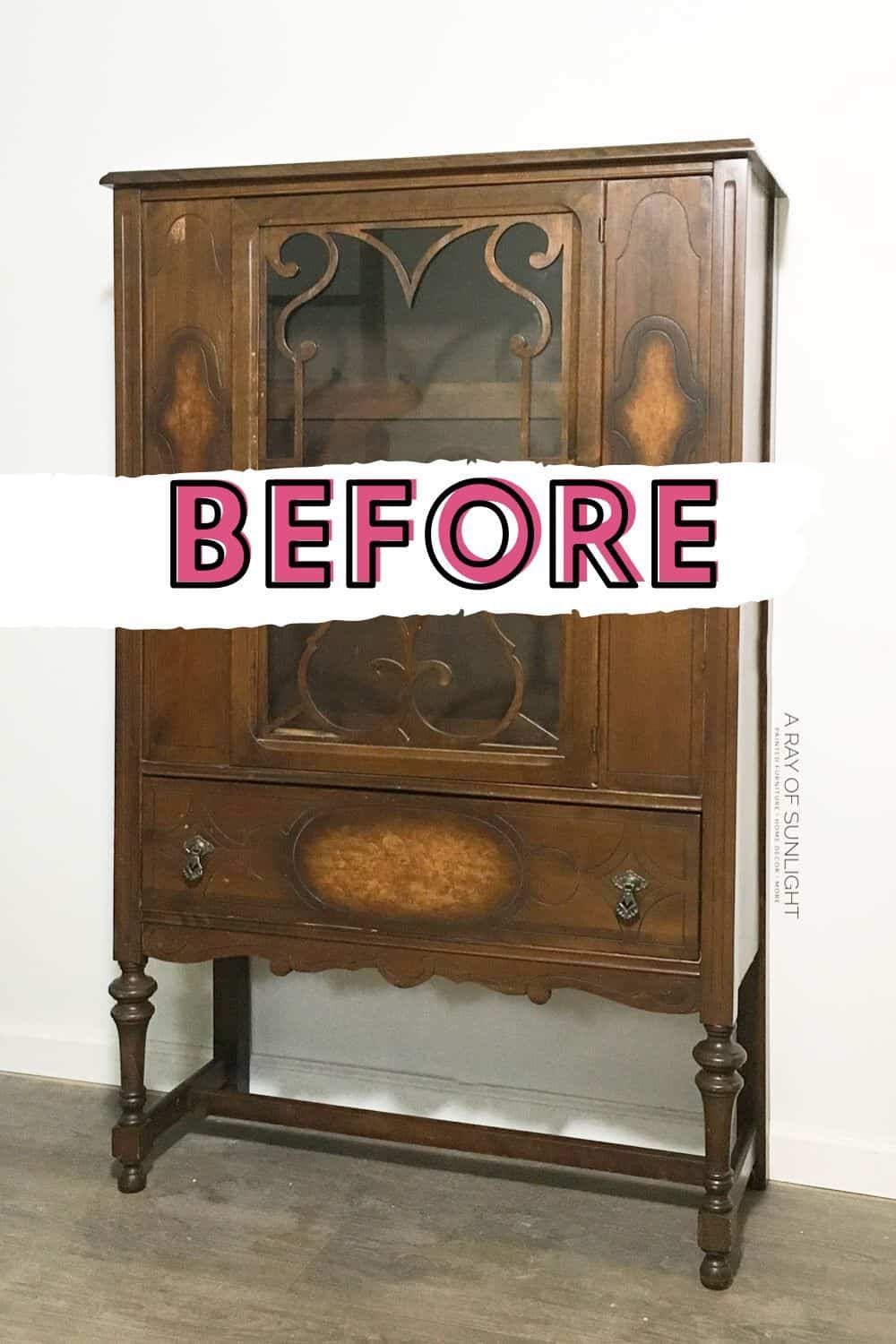
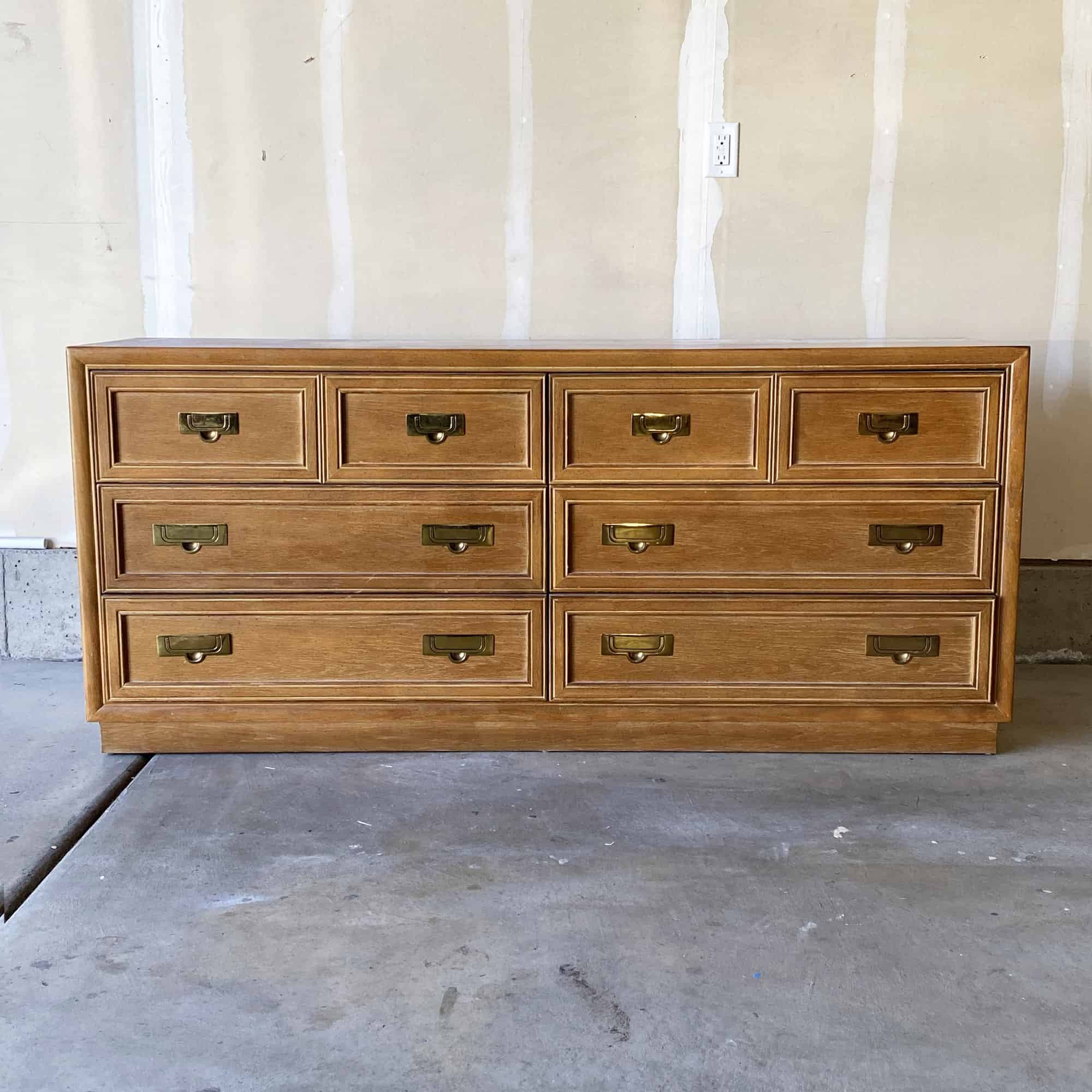
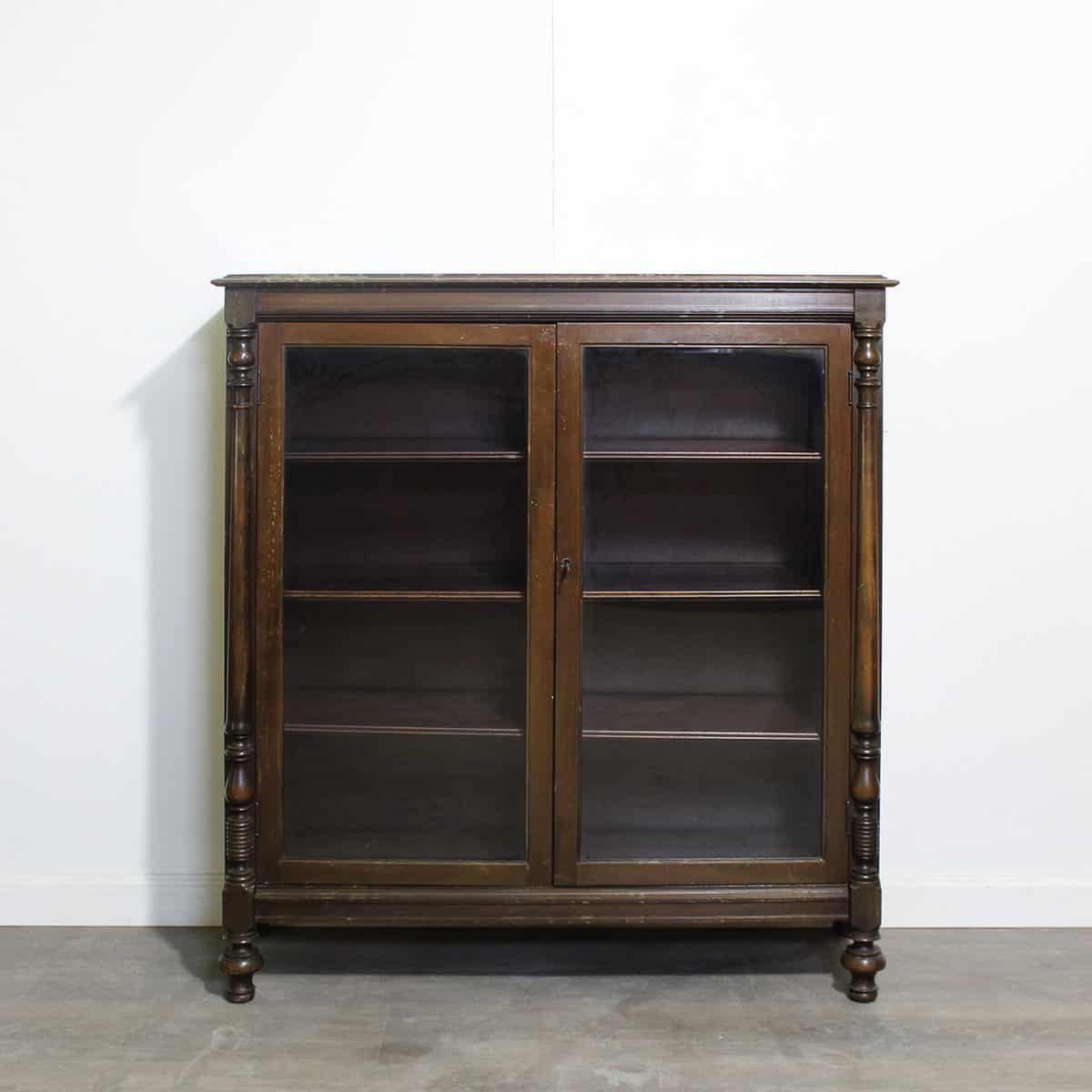
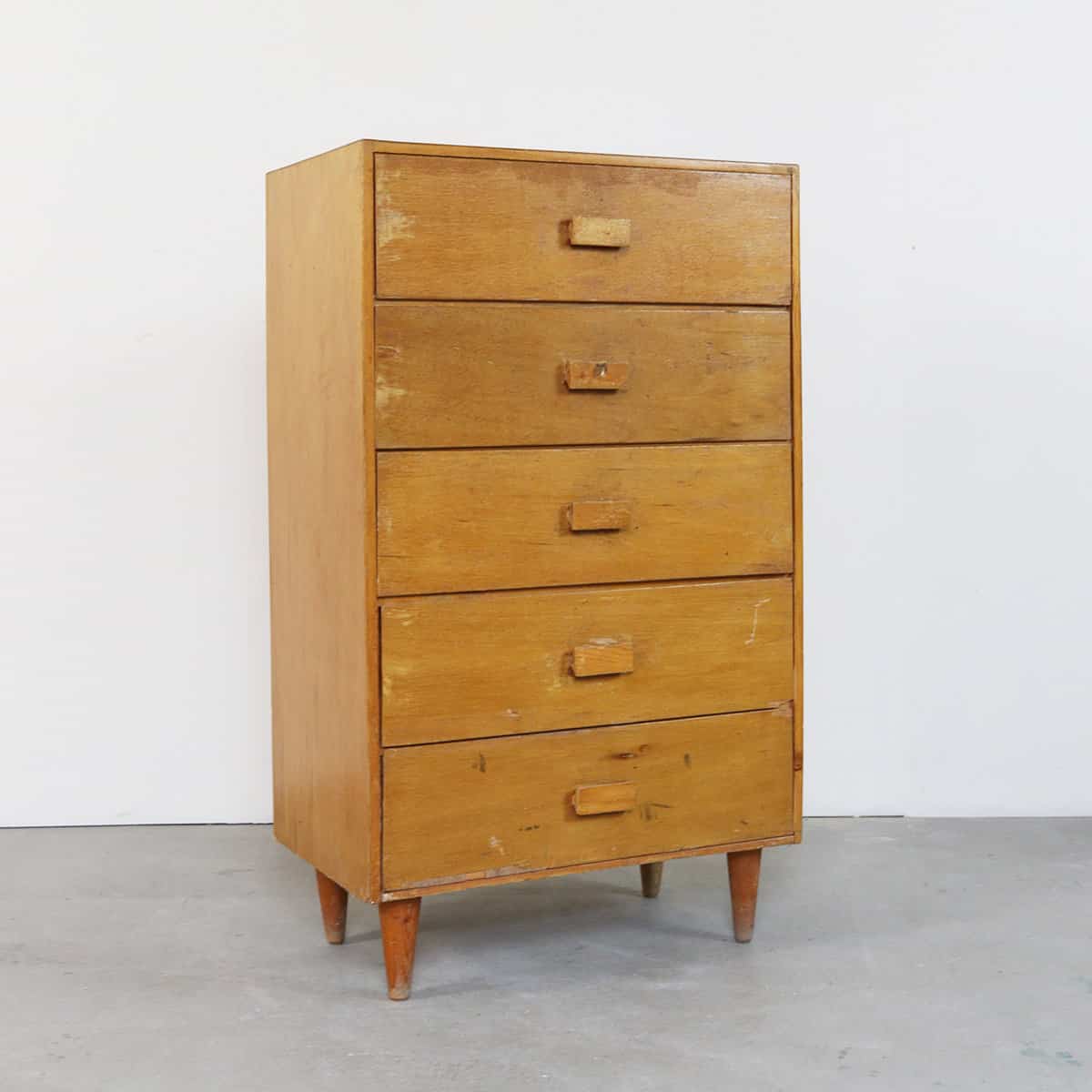
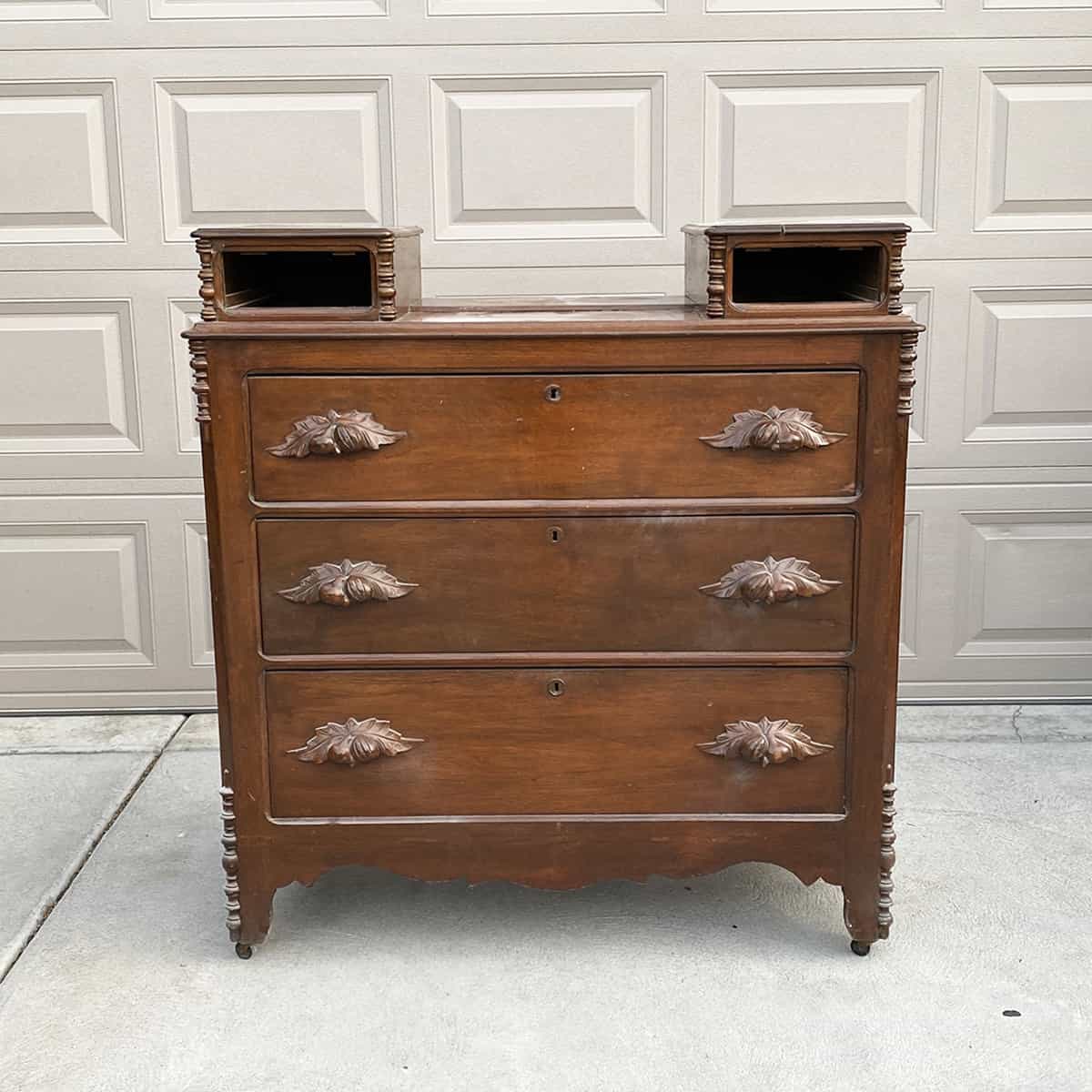
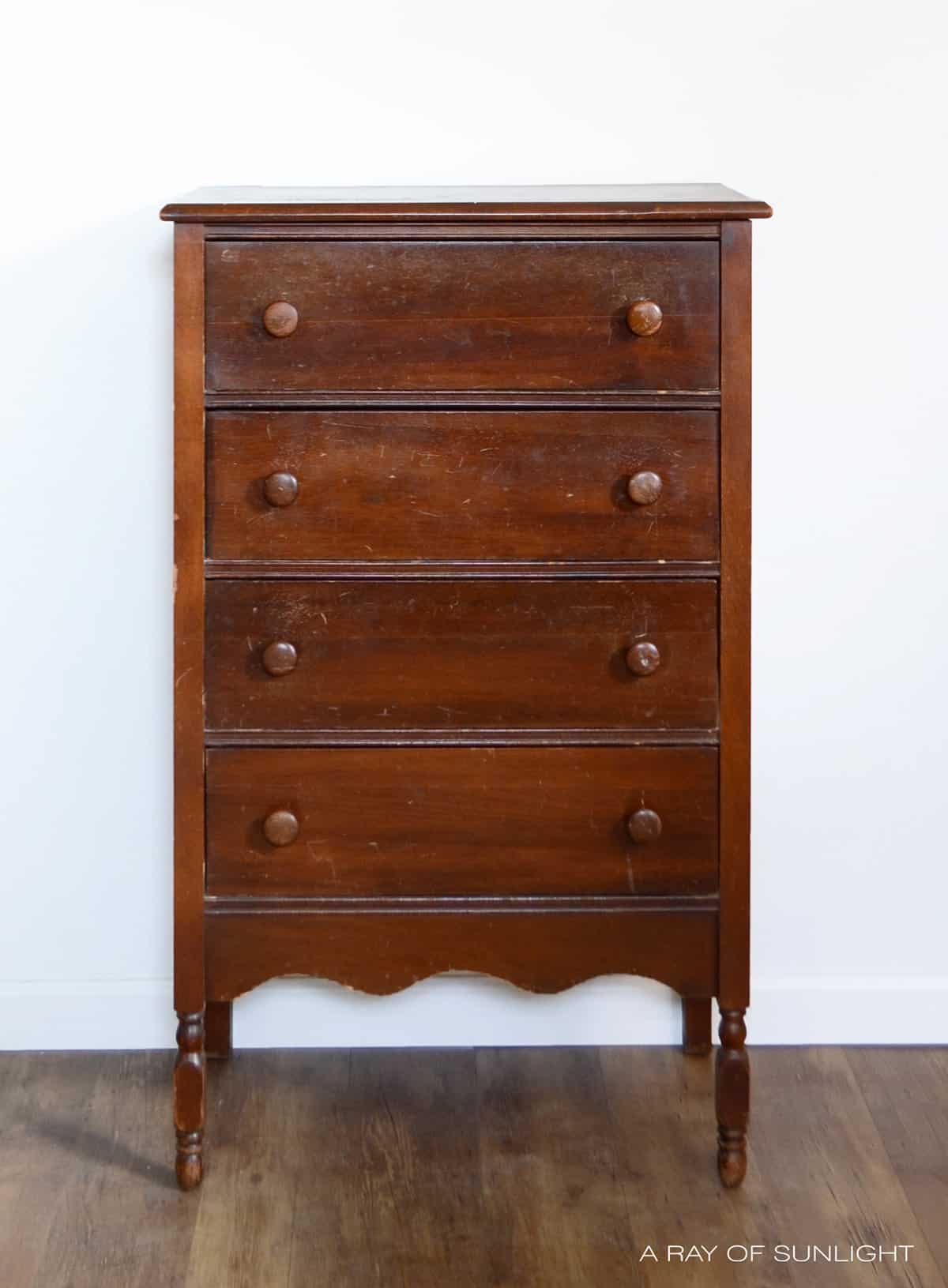
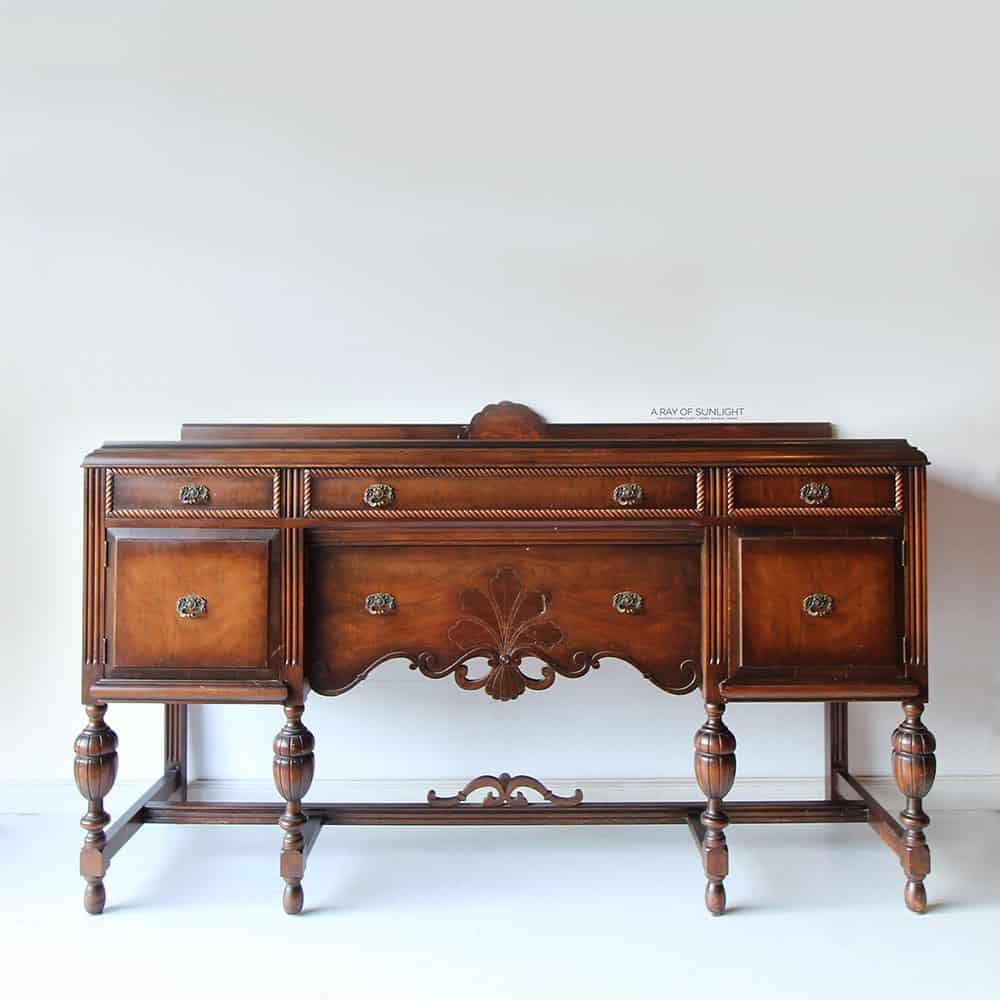
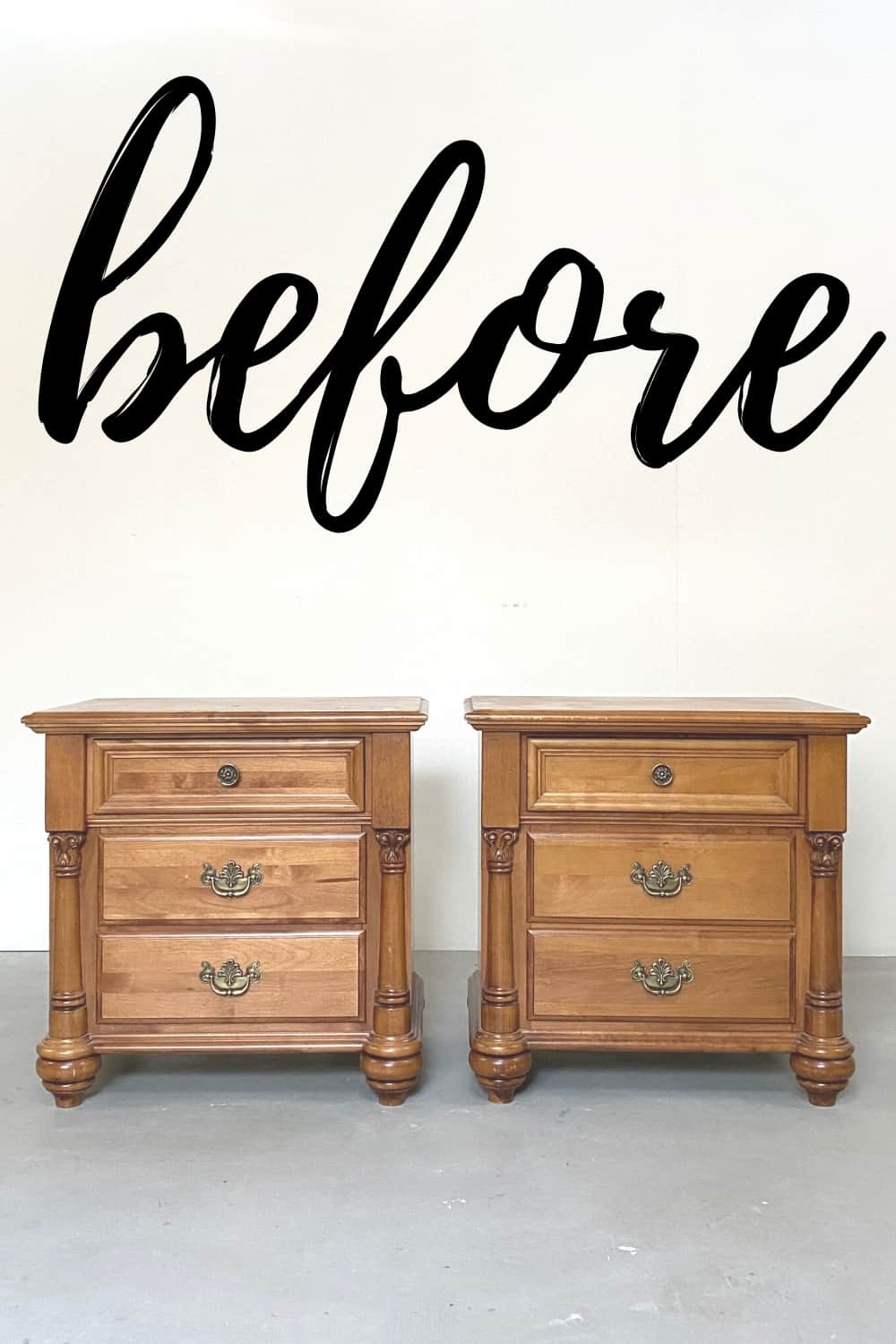
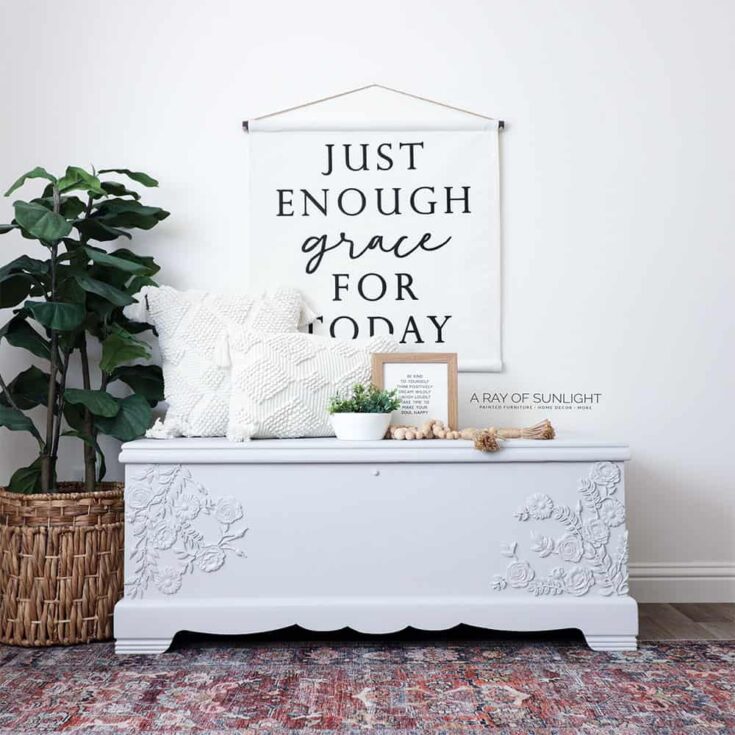
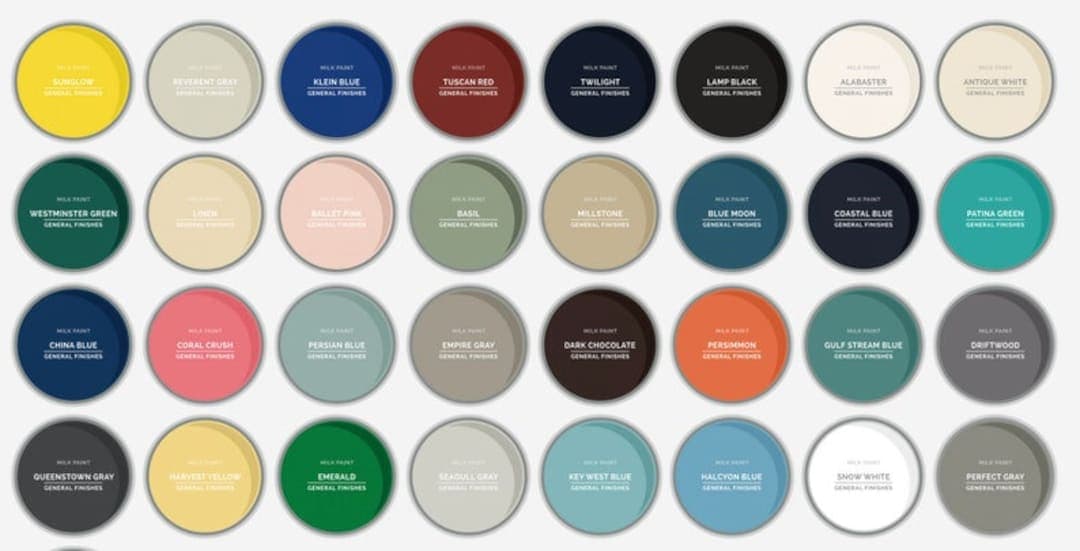


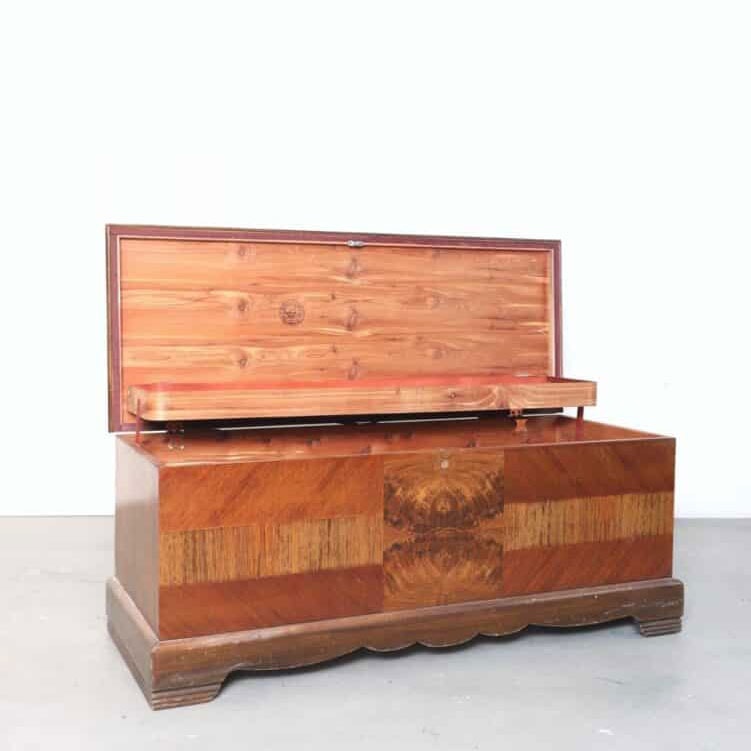
Beautiful,I would have never thought of painting my mother’s old cedar chest!
This is the best cedar chest redo you’ve done. I love the details! I have one I’m in the middle of, and I may add these to mine too. Love it.
This is absolutely amazing, love the flower detail, its stunning,
Thank you for sharing your links with us at #274 SSPS Linky. See you again next week.
How pretty, love the resin molds too! Pinned.
Glad you experimented. Beautiful result!
Wow Natalie!
What a beauty you created.
I would be a mess trying to do something like this. lol
I have molds, I have resin . . . maybe I could try a small project.
pinned!
gail